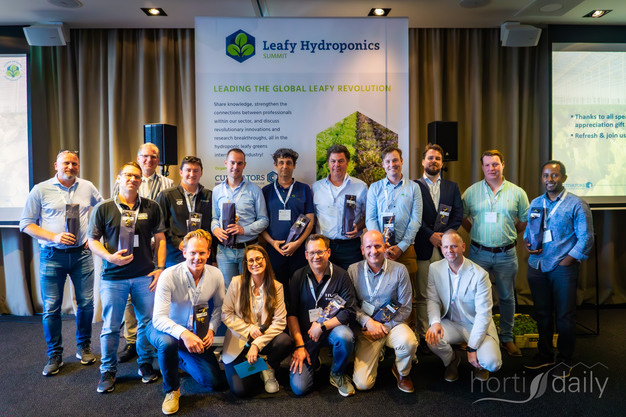Is leafy hydroponics still an emerging crop, or has the market already matured? It's a tough question to answer. In recent years, cultivation systems and techniques have advanced rapidly, acreage has expanded, and the market has clearly grown. We've seen both success stories and failures - signs of a sector moving toward maturity. Yet when considering the long-term potential and untapped opportunities, it seems this market is still in its early stages.
Click here for the photo report.
Yesterday, on the opening day of the Leafy Hydroponics Event, various aspects of the value chain were explored. Organised for the second time by Dutch consultancy company Cultivators, the LHS (Leafy Hydroponics Summit) was launched in 2024 as an international two-day event for industry leaders, researchers, and innovators in the hydroponic leafy greens sector. Given the attention for the event, with growers participating from Japan, the U.S., Canada, and wherever you can find them, it's a dynamic and international market.
 © Arlette Sijmonsma | HortiDaily.com
© Arlette Sijmonsma | HortiDaily.com
The market potential is undeniable—something nearly everyone agrees on. This was underscored by the keynote from Frank Hessing of fresh produce processor Hessing Supervers. Although the company currently sources mainly from open-field cultivation, Hessing highlighted how labor shortages, rising labor costs, strong retail certification demands, and the impacts of climate change are pushing the cultivation industry toward a more capital-intensive model.
From potential to practice
But how do we get there? Even when there's broad consensus about the market potential, growing leafy greens hydroponically—and doing so profitably—is not easy. A logical starting point is with breeding. Andres Cervantes Garzon and John Gray of Enza Zaden shared insights into the development of new varieties, aimed at increasing productivity and even creating entirely new product categories. Today, LHS participants will visit Enza Zaden to see their breeding work firsthand.
The next stage in the value chain—cultivation—was discussed in depth, both by technology suppliers and growers, such as Paul Ruser, Gebr. Meier and Tristan Fischer, Fischer Farms. Partly a grower and partly a technical supplier, Olivier Deforche of Green Production Systems presented on mobile gutter systems, highlighting their impact on spatial efficiency and workflow optimization. Arnold de Kievit of Oreon reflected on 15 years of experience with LED lighting for leafy greens, emphasizing improvements in energy efficiency and crop uniformity. (We'll share his future outlook in next week's update.)
Vincent Kickert of Cultivators addressed climate control and data utilization, emphasizing actionable strategies for optimizing growing conditions. Later in the afternoon, he returned to the stage to lead into the international growers panel, where producers from various regions shared their experiences and best practices across different climates and markets.
Bas de Bekker from Meteor Systems showcased floating systems and their role in scalability, while Joost Somford of JASA Packaging Solutions presented innovations in packaging and processing for leafy greens, including automation and sustainability trends.
From construction to ROI
Focusing on return on investment (ROI), Ronald Thijssen of Ammerlaan Construction provided a practical overview of what's involved in building a leafy greens greenhouse and why you should not just focus on that one piece of lettuce, but on the business you are building. Meanwhile, Jerry van Leent of Yeald shared a strategic perspective on mergers and acquisitions in the hydroponics sector, highlighting growth areas and ongoing consolidation trends. According to him, the hydroponics sector has entered a new stage in its development cycle. After a wave of investments, mergers and acquisitions (M&A) activity is increasingly shaped by the economic realities of the post-growth phase. Where technical feasibility and market potential were once the leading arguments, attention has now shifted to operational excellence and sustainable returns.
The final segment of the day featured technical deep dives. René Beerkens from Hoogendoorn outlined how data-driven growing is implemented in practice. Renko Schuil of TTA-ISO discussed the role of robotics and AI in indoor farming, cutting through the hype with real-world applications. Habtamu Giday Gebraegziabher from Maan Biobased Products introduced Nygaia, a new substrate that is redefining cultivation parameters, especially in terms of sustainability and crop response.
The day concluded with a panel summarizing key technical insights, followed by closing remarks from Cultivators and an evening of networking and dinner. And as we speak, the second LHS day is in full swing, with the participants visiting several horticultural facilities in the Hoorn region, Netherlands.
Click here for the photo report.
For more information:
Nicole Kuleshova
Leafy Hydroponics Summit
Nicole@cultivators.nl
cultivators.nl
